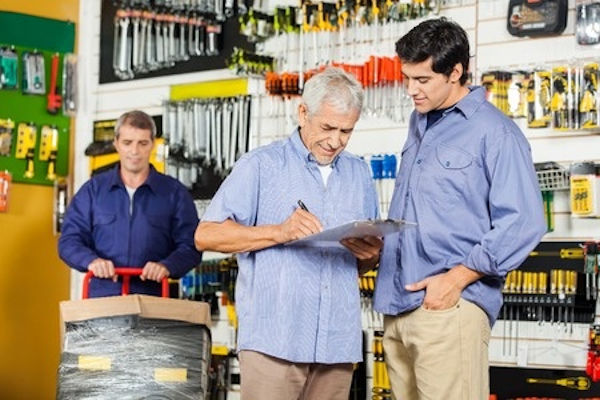Workplace Inspections
What Should We Inspect?
A consistently effective safety inspection will follow a procedure based on the inventory of hazards specific to the workplace.

The inventory will include the hazard prevention actions and controls designed to reduce or eliminate worker exposure. Some important points to remember include:
- Develop safety inspections to check for specific hazards to make sure that they are properly controlled using the Hierarchy of Controls.
- Do not overlook areas outside of the production mainstream.
- Your search for common hazards and OSHA standards violations should cover the entire worksite, including all office areas.
In June 2020, a serious incident occurred at a manufacturing facility in Ohio involving a batch operator and a concrete mixer. The mixer discharged concrete through a pneumatic door designed to remain open when pneumatic energy was released via an exhaust valve. However, the handle of this valve had broken off and had not been repaired or replaced.
As a result, the batch operator attempted to close the discharge door manually. During this process, the door closed unexpectedly, causing a severe head injury. The operator was transported to the hospital and died five days later.
A federal investigation led to a workplace safety citation, a $500,000 fine—the maximum allowed—and a court-ordered Safety Compliance Plan.
This incident underscores the importance of hazard recognition and control. A damaged exhaust valve represents a clear failure in hazard management - both in identifying the risk and ensuring that an effective control (engineering or administrative) was in place to prevent harm.
Key hazard analysis and control takeaways include:
- Effective inspections should follow a procedure based on a hazard inventory, not just routine checks.
- Hazards involving energy control systems should be addressed using the Hierarchy of Controls, prioritizing engineering fixes over procedural workarounds.
- Areas beyond the production line—including maintenance zones and equipment used across shifts—must be included in regular inspections.
- Supervisors should inspect equipment at the start of each shift and follow up on any missing or broken components.
- Employees at all levels should be encouraged to report potential hazards and verify that appropriate controls are in place.
Who Should Inspect?
From your reading earlier, you already know that the safety committee may be responsible for conducting regular safety inspections. But that is where it ends, and that should not be. Supervisors and other employees should be conducting safety inspections on a regular basis.
- Supervisors: Supervisor's should inspect their work areas at the beginning of every shift to ensure equipment and personnel are ready to work safely. This policy is particularly important when other shifts use the same area and equipment or when after-hours maintenance and cleaning are routinely done. And, a good walkaround inspection always sends a message to employees that safety is important.
- Employees: Involving employees in all aspects of the safety and health program, including hazard identification and control, is smart business. Get as many employees involved as you can.
- Safety committee members: Safety committees may be assigned safety inspection responsibilities, but we do not recommend that the employer rely solely on safety committees to perform inspections.
- Safety professionals and staff: Employees who specialize in safety and health can be an excellent source of help in providing the necessary education and training on hazard identification. In a small business, the specialist may be a Production/Quality Control manager or another member of management with many important duties in addition to safety and health.
Knowledge Check Choose the best answer for the question.
3-6. A consistently effective safety inspection will follow a procedure based on _____.
You forgot to answer the question!
